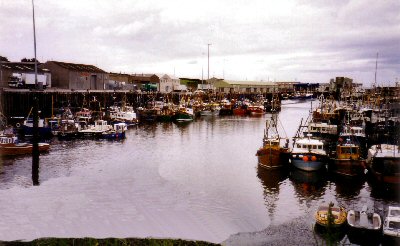Kilkeel – the Church of the Narrows – takes its name from the old parish church built on an earlier ecclesiastic site overlooking the
It is rumoured in tradition that the church was the gift of a Spanish merchant nobleman to the people of the town, who gave a Christian burial to his son when he drowned at sea nearby.
By the mid-seventeenth century it was in ruins. The church built on the same site was used as a
The accompanying cemetery has many interesting features. Several pastors of Kilkeel, many by the name of O’Doran are buried there under a granite cross. There is also a notable mort-cage – with iron bars covering and protecting the graves from possible grave-robbers! This family plot belonged to the
Coffin-shaped slabs, used as grave markers, are still to be seen. The earliest inscription recorded there is that of ‘Edward Annat’ who departed this life 29th May 1700. It is recorded that one Father Peter Lewis was the last Catholic priest to perform mass in the old Church in the 1500s.
There is also an old tradition that all the bodies were carried around the rath immediately before burial. The last recorded date of this tradition was of one Mrs Sloan in the 1870s. In the grounds also of the graveyard beside a medieval cross there is a granite socket stone, traditionally used as a wart well, for the cure of that ailment.
In the penal days, mass had to be celebrated in the open air at a place called Mass Forth. In the following century – in 1811 to be precise, though it was only completed in 1818 – the parish priest Rev John McMullen erected a chapel on the site. Today a magnificent Catholic Church stands here. Among the thousands of deceased Catholics buried here is your editor’s uncle, Frank McCullagh about whom I have written on this site.

It is difficult to conceive of Kilkeel without its harbour but that is of fairly recent construction – no more than a century and a half ago! It is for fishing that Kilkeel is best known: it is now the premier fishing port of the North-East with one of the finest and largest locally-owned fishing fleets in all
The local fish-processing factories are working below capacity and are in danger of closure. There is now too a busy aircraft factory, producing seating for commercial aircraft.
Kilkeel is considered to be the ‘capital’ of the
